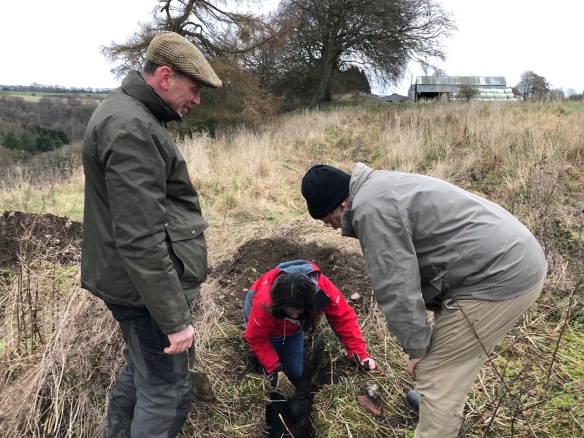Richard Baines – North Yorkshire Turtle Dove Project Officer
There is something magical about ponds: the mystery of what’s lurking in the depths, the tranquility of water and the constantly changing scene as many types of wildlife come and go on a fleeting visit or stay on to take full advantage of the precious habitats provided.
Turtle doves are no different from every other bird on the planet – they need water to survive. During the summer when our doves are raising a brood of chicks or squabs, finding water becomes even more important. Turtle doves feed crop milk to their small chicks in the nest in the first four days of their life. The milk is made from secretions from a lining in the crop. After four days the milk is mixed with regurgitated food and slowly changed to solid food as they become older.
That’s why through our Turtle Dove Project we have been keen on providing water sources – in particular now during the winter before our turtle doves return in the spring. This post celebrates one local farmer who has been keen on restoring his dew pond for a long time in the south west corner of the North York Moors and we were very pleased to assist his aim with a bit of project funding, especially as there were turtle doves recorded on the farm in 2019.
Over 100 years ago there were many dew ponds across the landscape. Originally used for livestock to drink from and created at sites which naturally collected water, many of the older ponds have now vanished as farming systems have changed and the ponds have dried up.
This is the story of the recent dew pond restoration revealed through photography…

Before the pond (the site in summer 2019). The original depression left of the track filled with ruderal vegetation with very little sign of the old pond.

Digging the test pit. A major success as we found the old dew pond stone base about three feet below ground.

Taking Levels. This to to ensure the pond is created level to the above ground area, a tilting pond will run dry!

The first buckets. Spoil was piled up by the side of the site then removed from site using a dumper.

The first layer, weed membrane. A membrane helps to prevent vegetation growth into the water tight clay and provides a level area for laying the clay.

The second layer. clay lining. Special ‘puddling clay is brought in to provide the water proof base for the pond. A radio controlled roller is used to compact the clay.

The third layer, barley straw . Straw is spread over the clay to reduce algal growth and provide an additional substrate within which essential pond plants can grow.

The fourth and final layer, limestone chippings. Used as a traditional protection layer to reduce the risk of clay drying and protect the pond base from the damaging feet of paddling stock animals.

The finished pond.

One week later! After Storm Dennis we have water in the pond.. All we need now is the vegetation to grow back up and of course our doves to come back from Africa!


